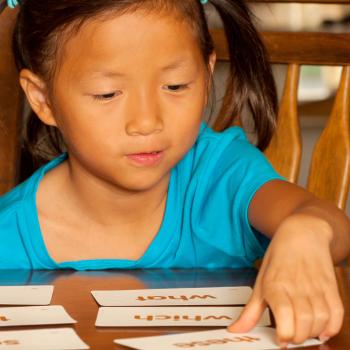In this guide, you will learn how to use Word Walls to support vocabulary development and retention.

Using Word Walls to Develop and Maintain Academic Vocabulary

Grades
|
Using Disciplinary Facets to Deepen Academic Vocabulary Knowledge
Grades
4 - 12
Strategy Guide
In this guide, you will learn how to use the disciplinary facets strategy to support vocabulary development across contexts and academic disciplines.

Grades
|
Using Generative Sentences to Apply Academic Vocabulary
Grades
4 - 12
Strategy Guide
In this guide, you will learn how to use generative sentences to give students opportunities to apply their knowledge of new words in writing.

Grades
|
ICED: The Key to Elaboration
Grades
9 - 12
Strategy Guide
Most students struggle when adding detail to their body paragraphs. This guide serves as a means of instruction and provides models for the students to master development.

Grades
|
Consensus Decision Making
Grades
7 - 12
Strategy Guide
This strategy guide introduces Consensus Decision Making, a method for facilitating and engaging students in a critical discussion of the central ideas of a text.

Grades
|
Developing Evidence-Based Arguments from Texts
Grades
6 - 12
Strategy Guide
This strategy guide clarifies the difference between persuasion and argumentation, stressing the connection between close reading of text to gather evidence and formation of a strong argumentative claim about text.

Grades
|
Depend on the Text! How to Create Text-Dependent Questions
Grades
1 - 3
Strategy Guide
Teachers need to create text-dependent questions to elicit close reading. When answering these questions, students learn to reread and think deeply about the text.

Grades
|
Promote Deep Thinking! How to Choose a Complex Text
Grades
1 - 3
Strategy Guide
Complex texts promote deep thinking and critical analysis by students. Through close reading of a complex text, students' independent reading abilities also increase.

Grades
|
Close Reading of Literary Texts
Grades
6 - 12
Strategy Guide
This guide provides strategies for choosing text that is appropriate for close reading and to plan for instruction.

Grades
|
Reading on the Go
Grades
5 - 12
Strategy Guide
In this Strategy Guide, learn how to prepare yourself and your students for reading and note-taking in mobile environments.

Grades
|
Get Close to Think Deeply: Creating Primary-Level Close Readings
Grades
1 - 3
Strategy Guide
Close readings allow primary students to engage with complex texts. Through repeated reading, students build a deep understanding of the text and critical thinking skills.

Grades
|
Tracking and Supporting Student Learning with Kidwatching
Grades
K - 8
Strategy Guide
In this strategy guide, you'll learn how to use kidwatching to track and support student learning. Teachers observe and take notes on students' understanding of skills and concepts and then use the observations to determine effective strategies for future instruction.

Grades
|
Developing Persuasive Writing Strategies
Grades
6 - 12
Strategy Guide
This strategy guide describes the techniques used in effective persuasive writing and shares activities you can use to help students understand and use persuasion in their writing and critical thinking.

Grades
|
Making the Reading Process Visible through Performance Assessment
Grades
6 - 12
Strategy Guide
Effective differentiation begins with purposeful assessment. In this strategy guide, you'll learn how to construct an authentic performance-based reading assessment that will give you access to students' thinking before, during, and after reading.

Grades
|
Using Partner Talk to Strengthen Student Collaboration and Understanding
Grades
K - 8
Strategy Guide
In this strategy guide, you'll learn about Partner Talk—a way to provide students with another learning opportunity to make learning their own through collaboration and discussion.

Grades
|
Introducing Ideas and Vocabulary with the Concept Sort
Grades
K - 8
Strategy Guide
A Concept Sort is a vocabulary and comprehension strategy used with students to introduce new topics and/or familiarize students with new vocabulary.

Grades
|
Using Paired Reading to Increase Fluency and Peer Cooperation
Grades
K - 6
Strategy Guide
In this strategy, students read aloud to each other, pairing more fluent readers with less fluent readers. This strategy can also be used to pair older students with younger students to create "reading buddies."

Grades
|
Teaching with Zooming Slideshows through Prezi
Grades
6 - 12
Strategy Guide
Through Prezi, a web application, students create "zooming" presentations for various purposes, such as presenting research, defending an opinion, or sharing a digital story.

Grades
|
Bringing Lessons to Life with Animoto
Grades
5 - 12
Strategy Guide
Using Animoto, a free Web 2.0 tool, students can develop short digital videos that include music, photos, video clips, and text as well as share their creations electronically.

Grades
|
Speak to Me: Teaching with Voki
Grades
6 - 12
Strategy Guide
Through Voki, a Web 2.0 tool, students create customizable avatars for class presentations for various purposes, such as presenting biographical information, expressing an opinion, or reading a poem.